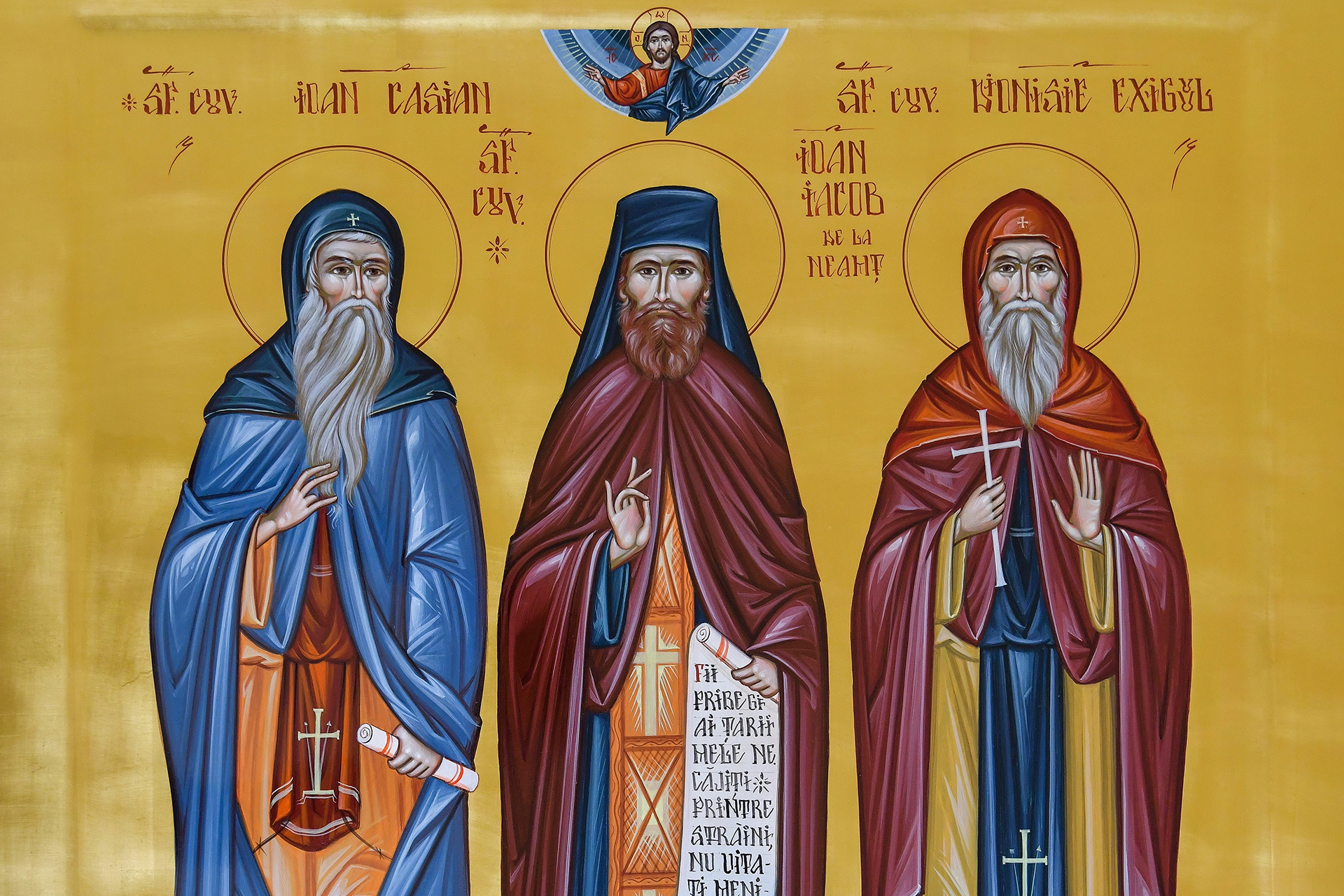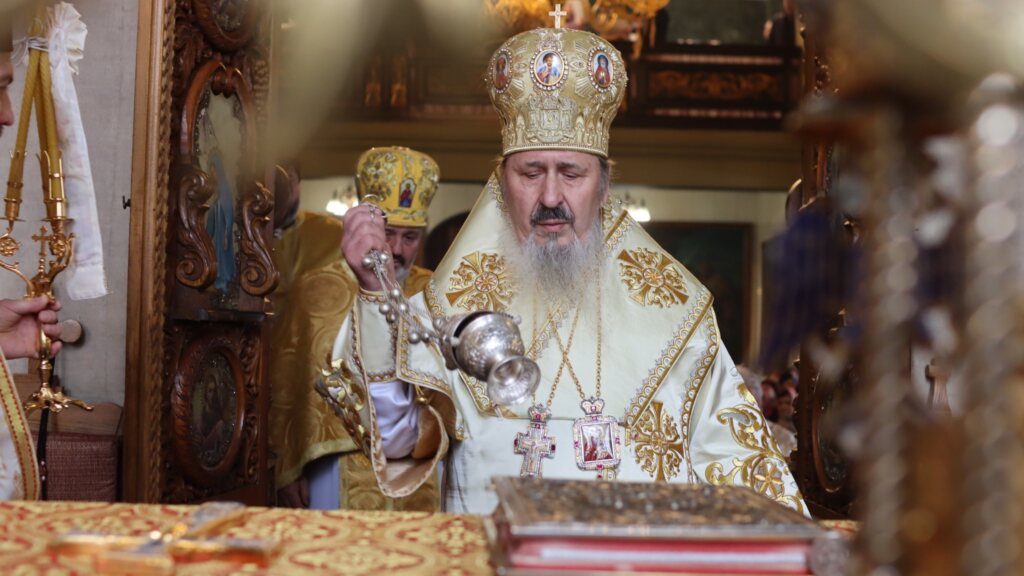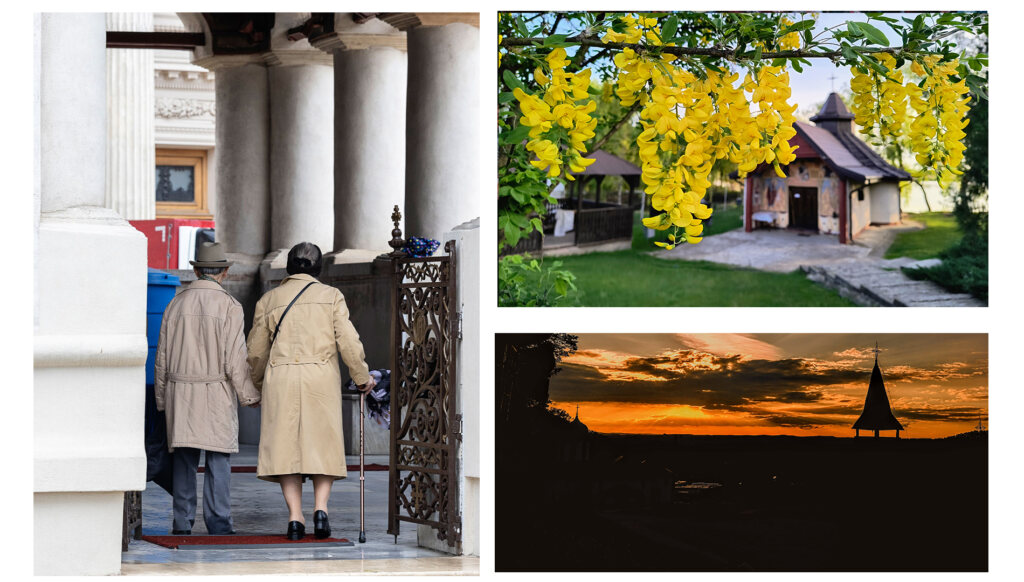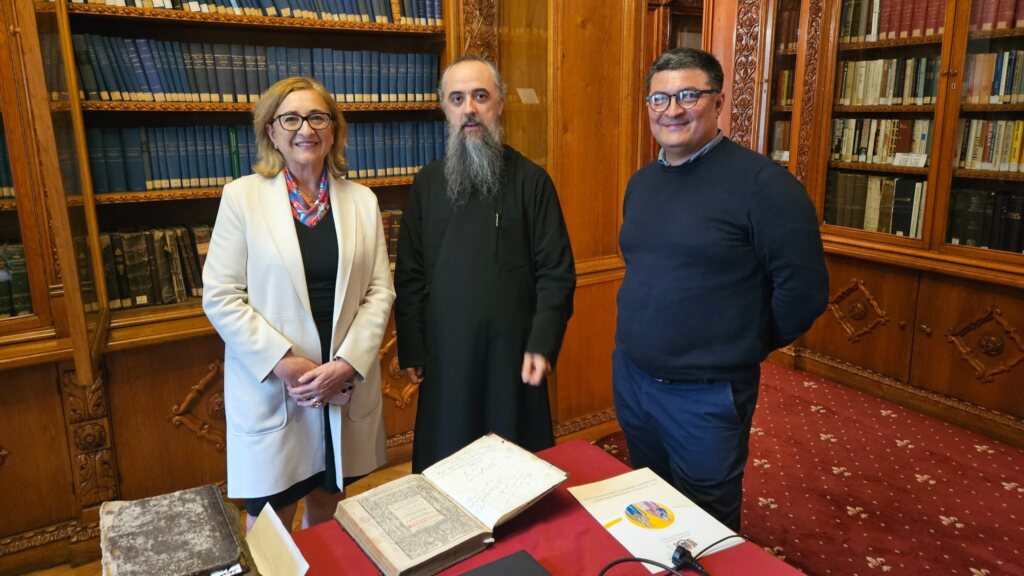Whether they are part of the Romanian communities in the vicinity of the country’s borders, or whether they have gone to work, study or settled permanently in other places than their homeland, Romanian Orthodox believers are in the care of the Church on all meridians of the globe.
“Romanians outside Romania” are generically named by the Patriarchate, which dedicates to them the Solemn Year 2021. To proclaim this fact, on the first day of 2021, Patriarch Daniel presented the icon of the “Solemn Year of the pastoral care of Romanians outside Romania” depicting the Saints of Romanian origin John Cassian, Dionysius Exiguus and John Jacob the New Chozebite.

The Patriarch chose these saints as spiritual protectors of the Romanian diaspora because they carried the same cross of living among foreigners, and their graves are outside Romania. They are especially intercessors for the Romanian people and protectors of Romanians who departed among foreigners, Patriarch Daniel emphasized.
Saint John Cassian has his tomb in Marseilles, France. Saint Dionysius the Humble, the father of the Christian era, is buried somewhere in Italy, the exact location is unknown. St. John Jacob, also called the New Chozebite, has his relics at “Saint George” Monastery in Choziba, Israel.
“All Romanian saints are protectors of Romanians outside Romania, but we have chosen for this icon three venerable people who have a special history and experience,” His Beatitude explained talking about the lives of the three Saints.
St. John Cassian (February 28/29)
St. John Cassian is “a father of the unseparated Church,” said the Patriarch, referring to the fact that this pious man lived before the Great Schism (1054). He was born in the parts of Casimcea in northern Dobrudja (at that time, Lesser Scythia) around the year 360.
The venerable John Cassian was one of the most important representatives of Christian literature and monasticism in the fourth and fifth centuries. He is also honoured as a saint by Roman Catholics.
He knew Latin very well, because he came from the Dacian-Roman population of Dobrudja. But at the same time, he knew Greek very well. He traveled to Egypt and parts of the East and then settled in Gaul, France, and founded two monasteries in Marseilles. He wrote several spiritual writings, especially for monks.
St. Dionysius the Humble (September 1)
“Dionysius Exiguus, another Dobrujan, lived a century later and was among the most learned people of his time. He was a counselor for 10 popes in Rome, organized the library of the Roman Church and asked Pope John, around the year 530, not to count the years since the founding of Rome or the time of Diocletian, but from the Nativity of Christ,” the Patriarch of Romania noted.
“This Romanian from Dobrudja knew Greek and Latin so well that he held a text in Greek in front of him and spoke in Latin or vice versa, he translated so quickly and so fluently. Saint Dionysius the Humble was a scholar, but at the same time he was one of the most fasting and ascetic monks.”
Although he was very learned, he knew very well the sciences of his time, St. Dionysius was very humble. He fasted a lot, prayed a lot, but did not judge anyone, the Patriarch stressed.
This ancient Romanian Saint is honoured both in the Orthodox Church and in the Roman-Catholic Church.
He humbly called himself Dionysius Exiguus. “This word was translated ‘humble,’ but he did not tell himself that he was humble, for it might have seemed a pride of humility. “Exiguus” means in Latin “the insignificant, without great importance.”
When the Holy Synod numbered him among the saints, it kept his name as he wished, “Exiguus.”
St. John Jacob (August 5)
In the center of the icon of the Solemn Year 2021 appears a saint who lived in the last century. In this representation he holds a parchment that reads: “Wandering sons of my country, / Troubled among foreigners, / Do not forget your purpose / Of Romanians and Christians.”
“Through this exhortation, he calls on all Romanians who are among foreigners not to lose their national identity and faith,” said the Patriarch.
Saint John Jacob of Neamţ was born on July 23, 1913, in the village of Crainiceni, Botoșani County, receiving the name of Ilie at his baptism. Orphaned as a child, he was raised by his grandmother Maria, and later by his uncle Alecu Jacob, who helped him continue middle school and high school.
In 1933 he joined the community of Neamț Monastery, then led by the future Patriarch of Romania, Nicodim Munteanu, where in three years he became a monk with the name of John.
He later went to the Holy Land. He lived first as a hermit, and after two years he entered Saint Savas Monastery. In 1947 he was ordained a priest and installed as abbot of the Romanian Hermitage of Saint John the Baptist in the Jordan Valley, where he remained until 1952.
He spent the last eight years of his life in a hard-to-reach cave, called Saint Anna, near the Monastery of St George the Chozebite. He died there on August 5, 1960, at the age of 47.
Twenty years after his passing into eternity, his grave was opened where his fragrant body was found. He was placed for veneration in the church of the monastery.
Photography courtesy of Lumina Newspaper / Luigi Ivanciu
Follow us on Twitter: @BasilicaNews & @BasilicaPhotos






